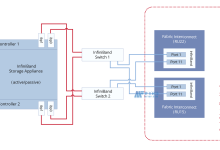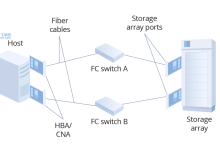linux is one of the most powerful and versatile operating systems available, particularly for engineers and developers. Inexperienced users may find it overwhelming to become familiar with using Linux for everyday tasks, but there are plenty of tools available to streamline the experience. Among these powerful tools is the ability to create and use aliases.
Aliases are shortcuts that can be created in Linux to represent a specific command or set of commands. This makes it easy to access commands more quickly, and more importantly, improves your workflow. Rather than typing out a lengthy command each time you need to execute it, you can use a far simpler alias to reference the same command.
Let’s go over the basics of how aliases work, and how they can be used to speed up your workflow on Linux.
Creating Aliases
The first step is to create an alias. This is done by editing the Bash profile file, which is located in the “~/.bash_profile” directory. Open up this file with a text editor and add the following line:
alias aliasname=’command’
Of course, you would need to replace “aliasname” with the name you want to give your alias and “command” with the command you want to reference. As long as this line is added to the Bash profile file, each time you open it up in the terminal, the alias will be ready to use.
Using Your Aliases
Once your alias has been created, using it is really simple. All you need to do is type in the alias name and press enter. The command associated with the alias will then run just as if you had typed it into the terminal. It’s important to note, however, that the alias you create must reference an executable file, otherwise it won’t run.
Using aliases can result in a massive productivity boost, especially if you use commands on a regular basis. Setting up aliases for all of the commands you need to access frequently can drastically reduce the amount of time it takes to open them up and run them.
Managing Your Aliases
If you have a large number of aliases, it can be difficult to keep track of them all, particularly if you’re switching between different Linux distributions. The “alias” command can help you stay organized. This command will display a list of all the aliases you have in your current session, allowing you to check which ones are currently active and make any necessary adjustments.
Additionally, if you want to make sure that your aliases are accessible across different computers and distributions, you can copy your alias file over to other systems. This can be done easily with the “scp” command, which allows you to securely copy files between machines.
Conclusion
Aliases can be an incredibly powerful tool for streamlining and simplifying workflows in Linux. With the right commands, you can speed up your daily tasks and run commands more quickly and reliably. Setting up aliases is easy and can be done in a matter of minutes, so why not give it a try today?

 国外主机测评 - 国外VPS,国外服务器,国外云服务器,测评及优惠码
国外主机测评 - 国外VPS,国外服务器,国外云服务器,测评及优惠码












